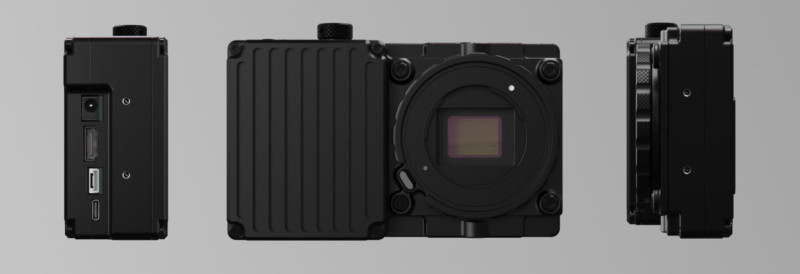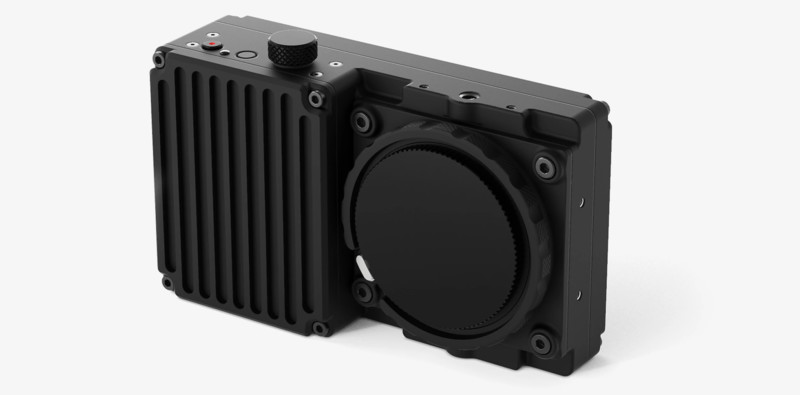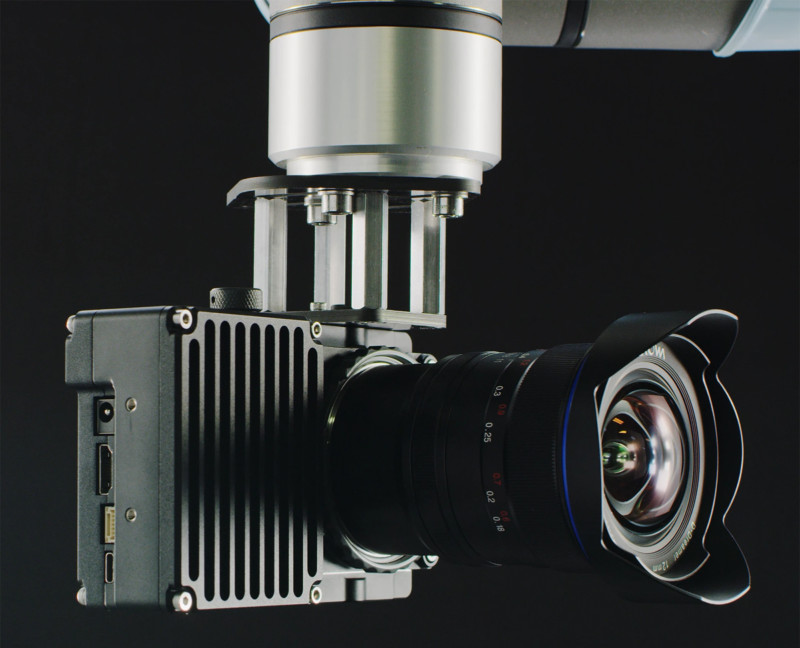Freefly, the company you probably know best for its Movi camera stabilization system, announced the $10,000 Wave camera capable of super slow motion capture in 4K. Using a super35 global shutter sensor, the camera weighs just 716 grams (25 ounces) and features a passive E-mount.
The Wave is capable of a host of frame rate options at different resolutions, with the highest possible frames-per-second capture of 9,259. That said, that speed isn’t entirely useful with a strange resolution of 2048×128 pixels.
For a more practical aspect ratio, the Wave can shoot 2K at 1461fps and 4K at 422fps. Because the sensor has an aspect ratio of 4:3 with a native resolution of 4096×3072, some of the aspect ratios you can choose are not what you would call “standard” for filmmaking. They do, however, offer more vertical space for post-production work.
The full list of maximum frame rates versus resolution here.
Freefly says the maximum frame rate depends on image resolution as set by the Width and Height settings in the camera. There are two Width options: 4096 (4K) and 2048 (2K). The 2K width option uses subsampling, which preserves the crop factor of the sensor but does not increase its light sensitivity. Continuous recording is possible at all frame rates from 1fps up to the maximum in increments of 1fps.

The Wave uses an internal 1TB or 2 TB SSD (that is removable) for recording and utilizes a 5:1 compression to make for a manageable file. Though the maximum bit rate can reach as high a 1 GB/s, the more standard aspect ratios will record at slightly less than that. The 4K at 422fps records at 0.89 GB/s while the 2K at 1461 records at an even lighter 0.74 GB/s.
The camera offers a continuous record time of 19 minutes in slow motion 4K, and up to 23 minutes in slow motion 2K with the 1TB storage capacity option.
Though the kind of SSD that can meet the speed requirements of the Wave limits the number of third party options out there, Wave will be providing more details on its suggestions for upgrading storage at a later date.

Freefly says they chose the E-Mount because it has a very short flange distance, making it the easiest lens mount for adapting. In the company’s live stream announcement of the camera, you can see a Canon Cinema lens attached to the Wave via an E-Mount to EF-Mount adapter. As a note, the E-Mount on the Wave is passive, meaning there is no electronic connection to the lens. Therefore, if you were hoping for autofocus, you’re out of luck.
The Wave itself takes a lot of its design decisions from other modular cinema cameras, as it has no built-in monitor. It is, however, designed to work perfectly with the Movi Pro integration system, which would give the shooter control over the camera from up to 2500 feet away.

The Wave is being released in batches, with the first batch of 20 units (which already sold out) shipping on November 18. The second batch of 30 units will ship on December 1, with the third batch of 50 shipping on February 15, 2021. If that doesn’t seem like a large number of total units, rest assured Freefly intends to put the camera into its rental system.
To put into perspective why this camera is garnering so much attention, the other highly-touted Phantom Flex Camera 4K can shoot at 938fps in 4K, but comes at a significant cost increase: it starts at $109,000. Though the Wave only shoots less than half the speed of slow-motion at that resolution, it’s $10,000 price tag is far more approachable. Additionally, the Wave is significantly smaller than the Phantom Flex making it compelling for a greater number of use cases.
You can learn more about the Wave at Freefly.com.
(Via News Shooter)